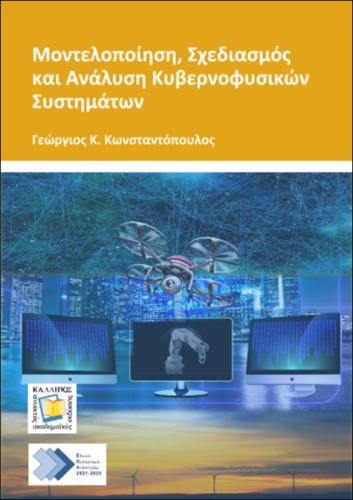| Title Details: | |
|
Modelling, Design and Analysis of Cyber-Physical Systems |
|
| Authors: |
Konstantopoulos, Georgios |
| Subject: | ENGINEERING AND TECHNOLOGY > TECHNOLOGICAL SCIENCES AND ENGINEERING > INSTRUMENTATION TECHNOLOGY AND ENGINEERING > (AUTOMATIC) CONTROL ENGINEERING MATHEMATICS AND COMPUTER SCIENCE > COMPUTER SCIENCE > OPERATING SYSTEMS > REAL TIME AND EMBEDDED SYSTEMS ENGINEERING AND TECHNOLOGY > TECHNOLOGICAL SCIENCES AND ENGINEERING > TELECOMMUNICATIONS ENGINEERING AND TECHNOLOGY > SIGNALS AND SYSTEMS MATHEMATICS AND COMPUTER SCIENCE > COMPUTER SCIENCE > ARCHITECTURE AND ORGANIZATION > DIGITAL LOGIC AND DIGITAL SYSTEMS MATHEMATICS AND COMPUTER SCIENCE > MATHEMATICS > COMBINATORICS > GRAPH THEORY |
| Keywords: |
Cyber-Physical Systems
Dynamic systems Discrete systems Networked systems Hybrid systems Embedded systems Control Algebraic graph theory Microcomputers |
| Description: | |
| Abstract: |
A Cyber-Physical System (CPS) consists of multiple computing devices which communicate between them as well as with the physical world through sensor and actuators in a closed-loop form. The aim of this book is to describe the concept of cyber-physical systems with emphasis on the modelling, design and analysis of modern systems given in the form of a cyber-physical system. The book contains multiple examples of cyber-physical systems from the areas of robotics, sensor networks and smart grids to assist in the understanding of the cyber-physical systems concept. First, continuous-time dynamic systems are analysed, including methods for control design and stability analysis, which are used to model the physical layer as well as its interaction with the cyber layer. Then, the concept of networked systems is presented, which are analysed through matrix and algebraic graph theory. Discrete systems are consequently presented using state machines (finite state machines, extended state machines, non-deterministic machines); these systems are then combined with the continuous-time dynamic systems to form the hybrid systems, which consist of a composition of continuous and discrete dynamics, as commonly found in cyber-physical systems. Finally, since the design of cyber-physical systems requires suitable selection of the components that are necessary for the interaction between the physical and the cyber layers, this book briefly presents the main individual components that are used to design a cyber-physical system (sensors, actuators, embedded microprocessors, memory architecture and input/output units).
|
| Linguistic Editors: |
Georgakopoulou, Eleni |
| Graphic Editors: |
Moustani, Evangelia |
| Type: |
Undergraduate textbook |
| Creation Date: | 27-09-2022 |
| Item Details: | |
| ISBN |
978-618-5667-93-1 |
| License: |
Attribution - NonCommercial - ShareAlike 4.0 International (CC BY-NC-SA 4.0) |
| DOI | http://dx.doi.org/10.57713/kallipos-109 |
| Handle | http://hdl.handle.net/11419/8597 |
| Bibliographic Reference: | Konstantopoulos, G. (2022). Modelling, Design and Analysis of Cyber-Physical Systems [Undergraduate textbook]. Kallipos, Open Academic Editions. https://dx.doi.org/10.57713/kallipos-109 |
| Language: |
Greek |
| Consists of: |
1. The concept of Cyber-Physical Systems 2. Dynamic systems 3. Networked systems 4. Networked systems 5. Hybrid systems 6. Composition of state machines 7. Concurrent models of computation 8. Design of individual components of a cyber-physical system |
| Number of pages |
216 |
| Publication Origin: |
Kallipos, Open Academic Editions |
| You can also view | |
| User comments | |
There are no published comments available! | |

